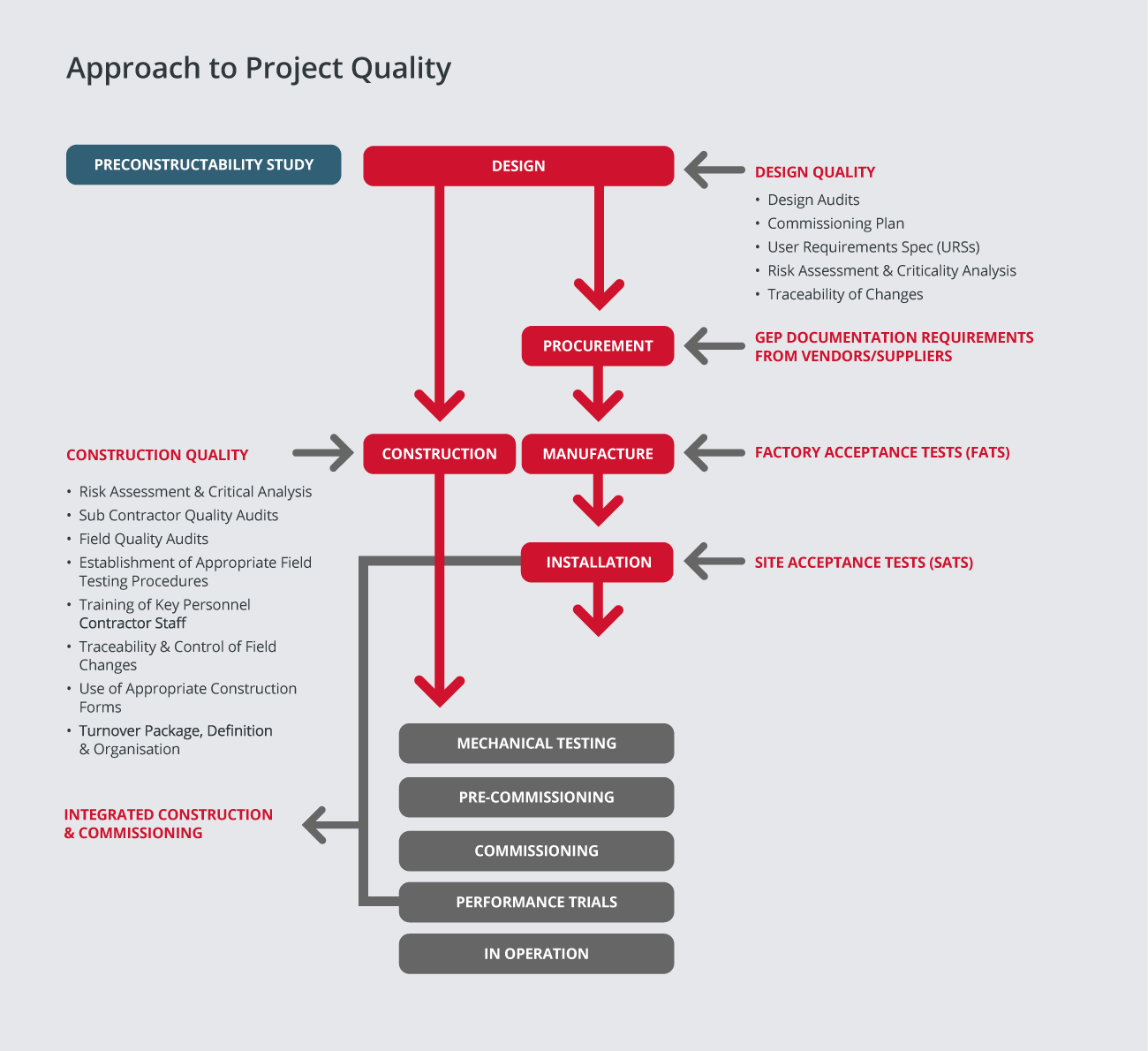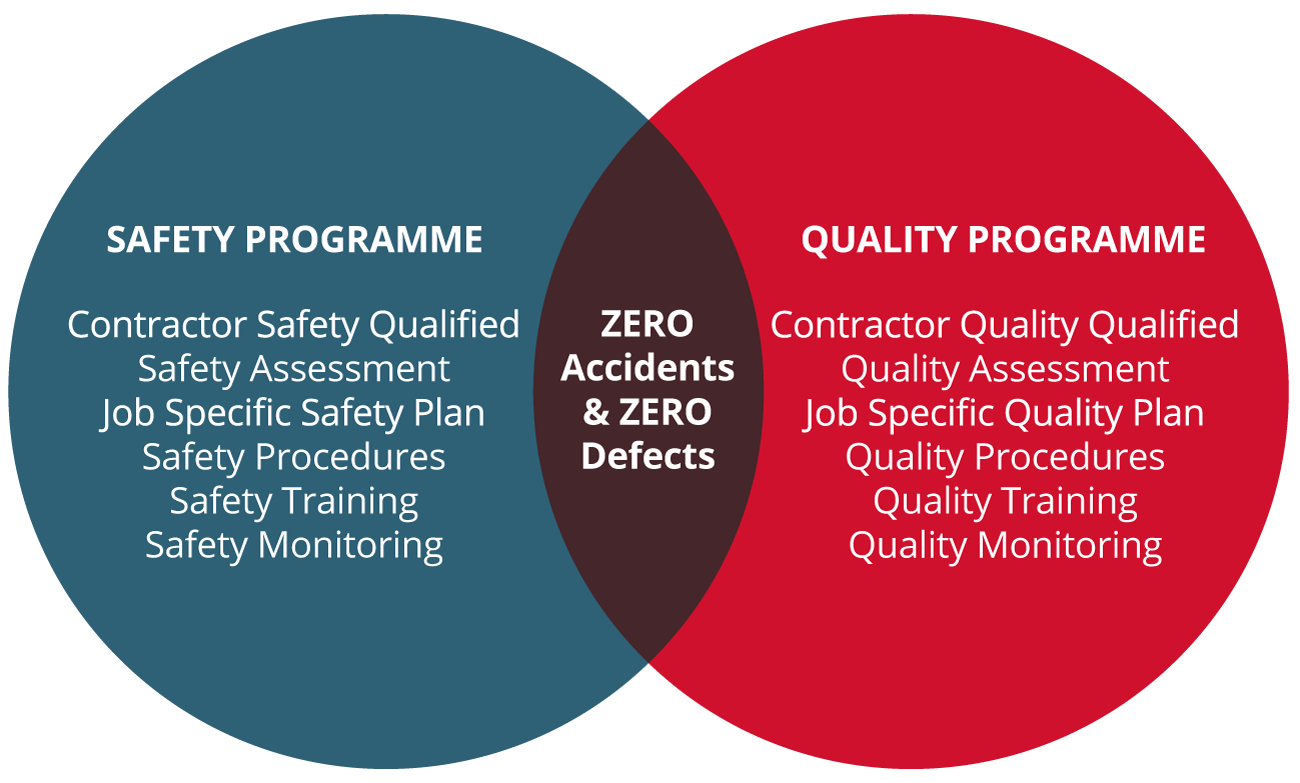Pharmaceutical plant or nuclear facility. Hospital or research establishment. Iconic building or prestigious residential development. For any high value asset, the quality and finish are critical. But with numerous contractors working on the project, how can you ensure that no one uses the wrong or counterfeit materials or cuts corners to complete the work on time?
A relatively small investment in a robust Quality Assurance programme mitigates risk and guarantees that everything you’ve asked for is delivered at every stage of the project. The aim of the programme is to maintain the right level of quality through our proven methodology, giving you documented proof that your new facility or building meets the standards expected of a high value asset.
Long-term reliability, low-cost maintenance and the entire ‘asset life’ are key performance indicators for the value of an investment. When a high value asset is bought or sold, be it a luxury apartment or a pharmaceutical facility, a documented proof of the quality and finish of the asset gives potential buyers or sellers the assurance that their investment is worthwhile. This assurance is a powerful tool that ensures a secure and good return on invested capital.
With a programme that runs in parallel with the construction phase of a project, CQA ensures that a facility is delivered on time, as specified and to the highest possible standards of workmanship. An effective CQA programme translates good design and engineering into good construction, avoiding many of the problems usually encountered during commissioning and start-up. Ultimately, a facility or a building with a comprehensive CQA programme is more likely to have a trouble-free transition into the commissioning phase of the project and beyond.

A well-designed facility with a first-class specification has little value if it’s poorly constructed and littered with defects. While an appropriate level of quality is usually agreed for the design and engineering phases of a project, it’s often overlooked for the construction phase – the time when quality issues have the greatest impact on a facility’s performance. Good construction quality is essential if you want your investment value to be guaranteed. If the overall construction quality is poor, this will lead to a poor return on invested capital as well as a loss of credibility and brand value.
SPGL’s Construction Quality Assurance (CQA) programme allows clients to use construction contractors with varying levels of complex, large-scale project expertise, yet to be assured of a trouble-free commissioning and start-up. Our tailored approach fosters a ‘culture of quality’ by encouraging the acceptance of quality concepts and practices by sub-contractors and vendors through consistent interaction and training. The aim of our programme is to prevent deficiencies, minimize defective work and strive for a zero critical items punch list
Hover over pie chart to read moreWith considerable experience from numerous largescale projects, SPGL has a detailed understanding of quality issues and their impact on high value assets. When we take the role of CQA Manager, we work efficiently, bringing great value to owners, programme management and construction companies.
A project is successful if it’s built with operation and maintenance in mind. As CQA Manager, one of our main objectives is to emphasize the importance of quality and self-inspections to contractors – helping them minimise defects and achieve high standards of workmanship. We start with a comprehensive Construction Quality Plan, documenting the key steps to deliver an asset that not only achieves the agreed level of quality but also meets end user expectations.
From initial risk assessments and audits to contractor training and reporting, SPGL can set up and manage a comprehensive CQA programme for projects of any scale and complexity. You can also select parts of our programme to supplement quality procedures that are already in place.
When we work directly for the owner, we focus on the interests of the owner, not only through enforcement and compliance with the specification, but proactively supporting their project team with all aspects of quality. This allows owners to be independently assured that the outcome will be trouble-free commissioning and occupancy with a reduced time to market.
Depending on the project delivery method, we can also help the architect, engineer and contractor’s team improve their levels of inspection and documentation. In other instances, we can work as part of the project/programme management team, focusing on field quality and the finish of the asset.
Projects tend to be driven by field execution with a focus on safety. Ideally, safety and quality should be combined to deliver projects with zero accidents and zero defects. To achieve this you need a CQA programme that mirrors a project’s safety programme – creating a culture on site where quality issues are identified, recorded and resolved as swiftly and effectively as safety issues.
